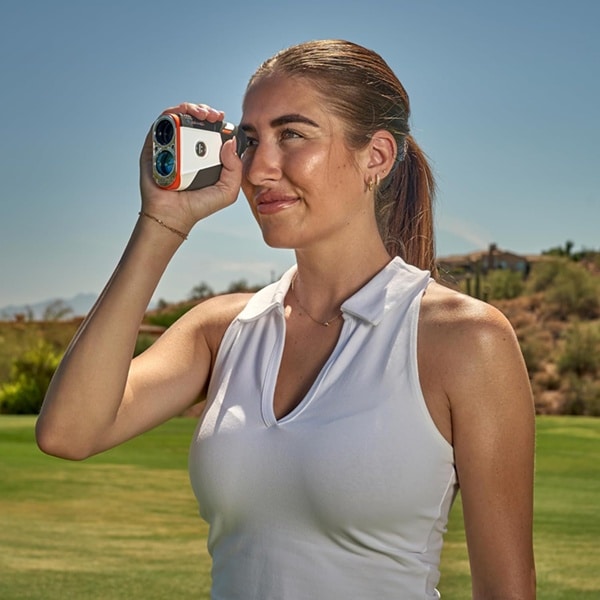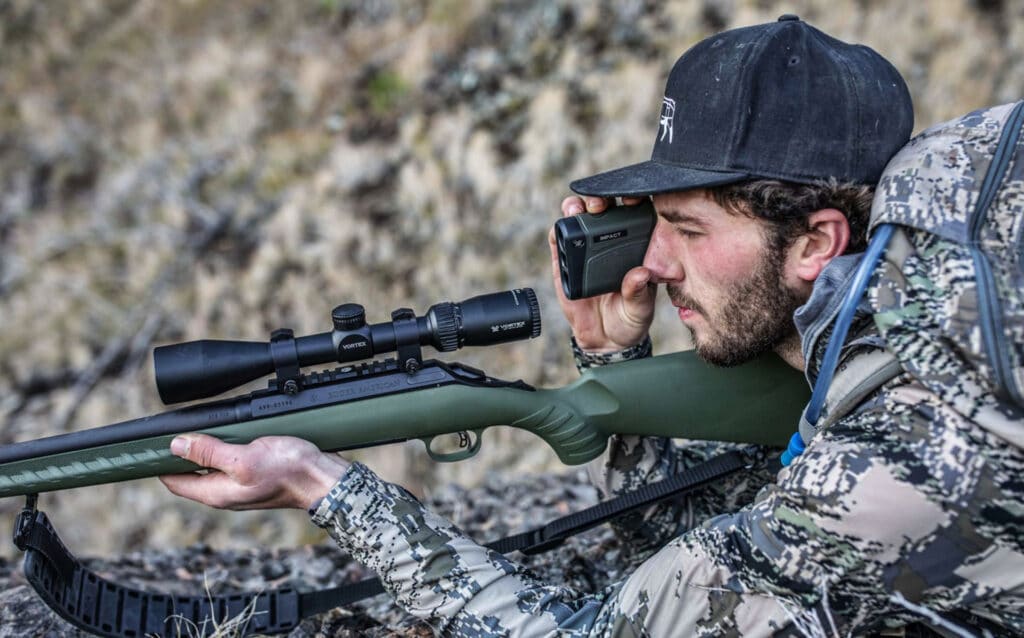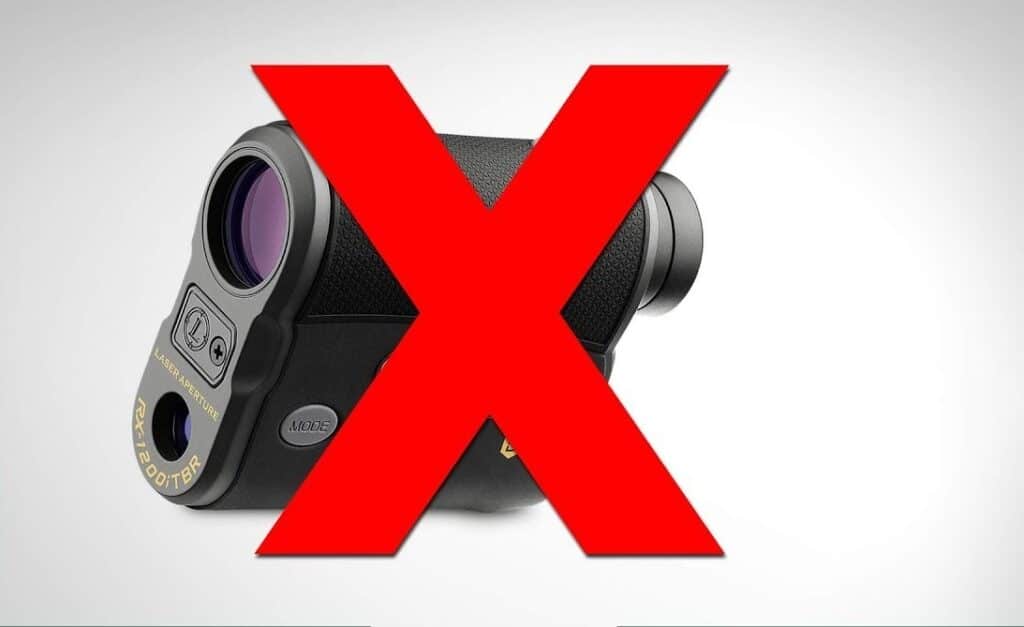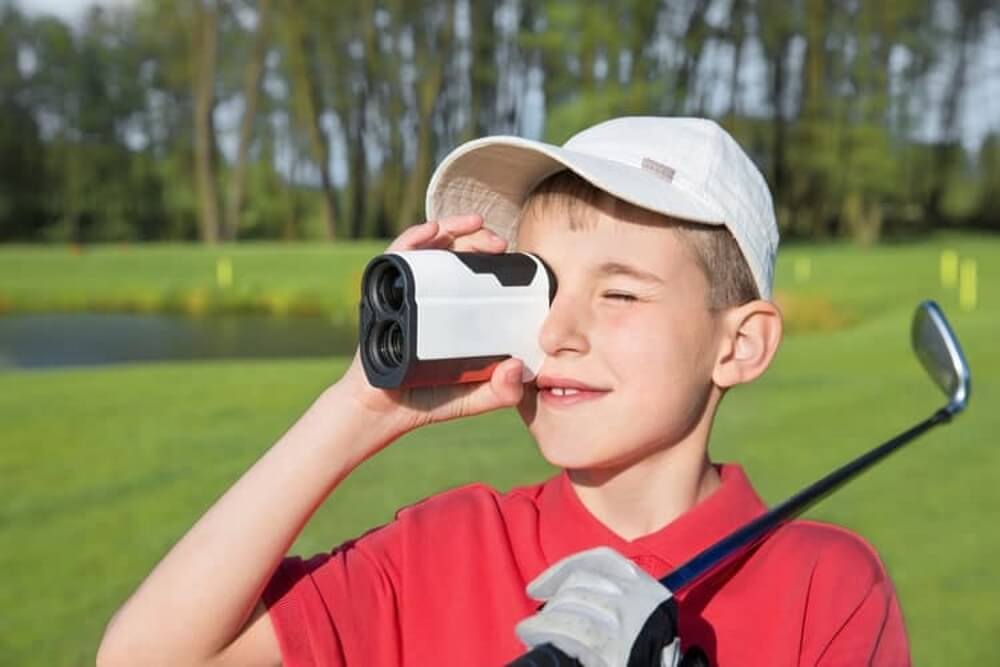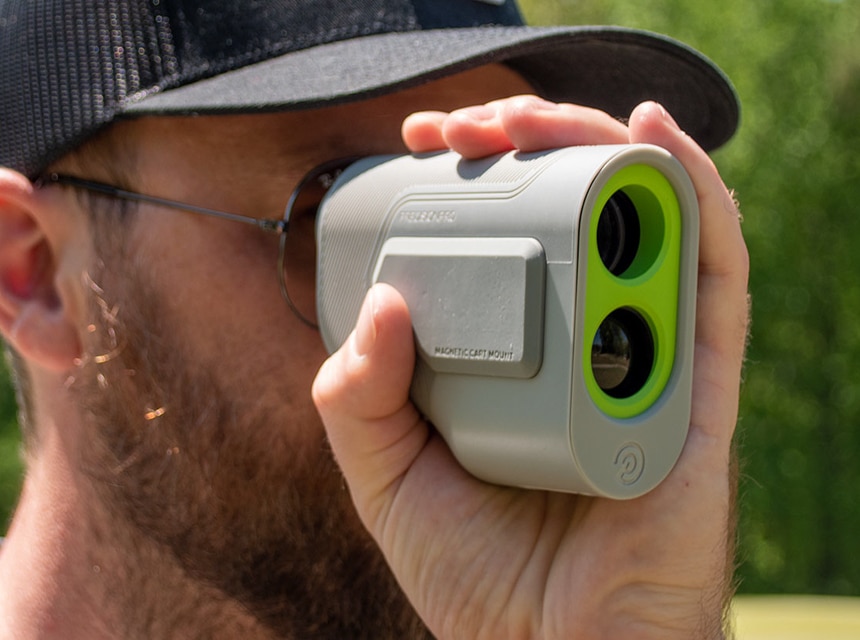

Every long-range vision device tricks the distance and brings objects that are far away up close. Whether in the opera or at a sporting event, on vacation, or on the hunt – rangefinder binoculars prove to be useful in many life situations. The best rangefinder binoculars will help you accurately calculate the distance between you and your target.
You will find a wide range of rangefinder binoculars and other long-range vision devices on the market. It is therefore not that easy to decide which model best meets your requirements. This is precisely why we are introducing to you the 14 best rangefinder binoculars that have been tried and tested thousand times over. The magnification and objective lens diameter, image stability, optics quality, the field of view, weather resistance, and eye relief of these devices have been analyzed. In this rangefinder binoculars review, we will inform you about the functionality and features of these devices and help you to select the right binoculars.
Other features: IR illuminator, 3D gyroscope, magnetometer, barometer, Smart laser range finder, weather-resistant, 2-year warranty
The ATN BinoX 4K binoculars are electronic “optical” devices, with 4K capability, full HD video recording, and an impressive feature set. The “Ultra HD” sensor and optics are possible due to an onboard dual core processor which produces deep and vivid colors.
The HD video recording at 1080p is streamed directly to the SD card. Dual streaming allows you to live stream and record at the same time at 120 fps which increases the options for creativity when it’s time to edit your footage.
These binoculars have a night vision mode, a laser rangefinder, an IR illuminator and it interfaces with other ATN smart devices. As an example: if you own an ATN scope you can relay ballistic information from these binoculars to that scope with no apps and the process is simple.
Other features: transferrable lifetime warranty, silver coated, Archery Mode, Gun Mode, Scan Mode
The Astra Optix HBX1600B is a premium grade set of laser rangefinder binoculars designed for a wide range of outdoor applications, including shooting, golf, bow hunting, and more. The long range accuracy is impressive, viewing objects at shorter distances or out to 1760 yards (reflective), up to 800 yards for deer, and up to 100 yards for trees.
The ranging is ultra-fast at 0.15 seconds with 10x magnification and three reticle options that are accessed via the LCD display. The quality of the image is maintained in a variety of lighting conditions with silver coated prisms and anti-reflective coatings.
Other features: IPX-7 water-resistant, fog proof, able to floating, internal rangefinder, BAK-4 prism, illuminated compass
The USCAMEL UW004 binoculars are suitable for observing the ocean and the earth. The objective lens of this device is 50mm. It has maximum brightness even in low light conditions. Impermeable to water, it can float there, with an easily configurable telescope. Using the compass on the side of the tube, you can identify the direction of the target.
Its 50 mm diameter is entirely protected by a multilayer anti-reflective coating, with a wide band. In front, the device provides contrast, especially in dark environments, thanks to an anti-reflective film lens. To travel, for leisure, to estimate distances, for naval navigation, this device lends itself to all uses
Although very inexpensive, it’s one of the best military binoculars with a compass and rangefinder.
These binoculars have 10x magnification, 50mm objectives, and 7.1mm exit pupils with FMC coating for great light gathering. They are waterproof, so you can use them in all kinds of activities.
It has BaK4 prisms to offer you clear images even in dark environments, sunrise or sunset.
They come equipped with an illuminated compass and rangefinder to measure distances. They are filled with nitrogen to prevent mold growth inside and prevent fogging.
It measures 18.7 x 14.6 x 8cm and weighs 900 grams. The pack includes a carrying bag, straps, user manual, and cleaning cloth.
What we liked: The image is very sharp and the light pickup is very good too. It comes equipped with a compass, anti-reflective coating, among other things.
What could be better: It would be ideal if it has an adapter to use it together with your Smartphone.
Other features: 2500 hours of battery life, twilight factor 20.5, BIS II, temperature, air pressure, and angle sensors, Bluetooth connectivity, up to 9 profiles in the app, one-touch ranging, scan and target modes, fog-resistant
The Zeiss rangefinder binoculars system is a real-time laser telemetry system with integrated computing. The ZEISS Hunting App takes all relevant factors into account in a personalized way, ensuring accurate shooting at any distance.
The rangefinder telemetry system determines the exact distance of the target up to a maximum range of 2,300 meters.
The potential of this telemetry system is completed by its ability to synchronize with the ZEISS Hunting app via Bluetooth. Each of the measurements includes physical and environmental factors such as temperature and atmospheric pressure in its calculations.
There is a storage capacity of up to nine custom ballistic profiles, configurable in the ZEISS Hunting app. Thanks to its BlueTooth function, it is possible to import personal ballistic data from the application to the Victory RF system.
The versatile functions of the ZEISS Hunting app make it the irreplaceable companion for the modern hunter. It’s therefore our best rangefinder binoculars for hunting.
The system’s various measurement functions take into account a multitude of data to calculate the exact Bullet Drop Compensation (ASV) value.
What we liked: The binoculars with a rangefinder for hunting is especially aimed at users who want safe and accurate shots in all distances and situations. We also like the run time of the battery. It powers the unit for up to 2,500 hours.
What could be better: There’s no area we think the binocular should be improved on, but some users might find the design too slick.
Other features: AquaDura lens coating ensures clear vision at all times, Bluetooth and the new Hunting App that calculates the individual ballistic output values based on caliber, bullet type, trajectory and weight
For the third generation, the Leica Geovid 10×42 binoculars remain at the top of the optical instruments market. Achieving high-performance, reliable telemetry at the touch of a finger is the Leica Geovid promise.
Relief mountain, hilly or steep slopes, whatever the difficulties of the terrain, the Leica Geovid 10×42 with an integrated rangefinder can make accurate measurements thanks to the ballistic functions of the latest generation.
Ascending or descending shooting, at medium or long-range, the mountain hunter who uses the Leica Geovid 10×42 R has in hand what it takes to have the best precision.
There is no need to be a specialist in ballistics to use Geovid 10×42. Just take the double bridge body of the binoculars in hand. And then raise them to the eyes to find instinctively how to handle them to obtain the desired information.
The laser beam used by the rangefinder functions of the Leica Geovid 10×42 R has proven, with supporting tests, to be completely harmless.
Fluorinated compound lenses and patented Perger-Porro prisms give the Leica Geovid great chromatic fidelity. The Leica rangefinder binoculars also give a faithful rendering of contrasts and reliefs, without any colored fringe on the contours.
Magnified by 10, the images transmitted by the Leica Geovid 10×42 R are very rich in detail. A wide field of vision of 110 m to 1000 m makes it easy to detect a game and then follow it over a large area, without ever losing sight of it.
What we liked: There is no need to be a specialist in ballistics to use Geovid 10×42. With these binoculars, the hunter can identify, immediately and without fail, each type of game.
What could be better: Tall in dimensions. Putting it in a bino pack may be a problem. Still, the price is high.
Other features: BaK-4 prisms with PC-3 phase corrective coating, RainGuard HD, 100% waterproof, bow and rifle modes, Matrix Display Technology, VSI, automatic SCAN, BullsEye & Brush modes
Knowing the exact distance brings many advantages to the hunter. For example, it makes it easier to decide whether a shot can be justified, be it with bullets or shot. The shotgun distance is often misjudged. And sometimes it is important to determine the distance and thus the time required to get to a mountain or a river. These are situations where the Bushnell Fusion 1 Mile 12 × 50 is really helpful.
These optics are the combination of the best Bushnell binoculars with the best Bushnell laser rangefinder. The result is an excellent combination device that enlarges every detail with high contrast and delivers clear images over the entire field of view. Optics and BAK-4 prisms are multi-coated. The exact distance between ten and 1,600 meters to the target is displayed at the push of a button. Both ARC bow and rifle modes are available. Also integrated are the Matrix Display Technology and the Rain-Guard HD anti-fog coating.
With high magnification and high light intensity, this solid, inexpensive device got its chance when targeting hoofed game over long distances into the twilight. Since the distance to the piece could be read at the same time, the decision could be made immediately whether to shoot or not.
What we liked: With clear images and easy handling, the Bushnell rangefinder binoculars can be used almost universally. Distance measurements to large trees are up to about 1.1 kilometers, to red deer up to about 550 meters.
What could be better: A port to mount a tripod would have made it more complete.
Other features: suitable for Military & Governmental Services, individual eyepiece focus, porro-prism system, submersible, neck strap, case, shoulder strap, cleaning cloth, objective covers, rain guard included
Steiner’s new 10 × 50 LRF is a high resolution, maximum definition lens binocular that integrates a precise rangefinder. Its zoom ratio is 10x and it has a brightness of 50mm in diameter. It is a navigation instrument of the highest range that combines the most innovative laser technology with specialized nautical optics.
Calculating distances on the water is often a complicated task. The surface is never stable, the atmosphere is always humid, altering the information collected and the trajectories of the ships are unpredictable both in speed and en route. The margin of error in approximate calculations is often high. If you want to be sure of the distance to an object, another vessel, or the docking bay, the new function of the Steiner 10 × 50 LRF gives you the ability to calculate it at the push of a button and aim at what you see through the binocular. The laser can measure objects up to a distance of 1860 yds
There is no product that better typifies the 10 x 50 LRF. It offers the union between the two main values of STEINER: the drive for constant innovation and the tradition of quality. This binocular fuses the high contrast and definition crystalline optics of the classic Commander series with the innovative laser range finder LRF (Laser Range Finder) to determine position, distance, and more safely direct docking in port. It’s one of the best laser rangefinder binoculars you can find on the internet.
What we liked: This prismatic joint is very robust and durable, shockproof, and water-resistant to 5 meters. The combination of multifunctionality, precision, comfort, and resistance make the M1050 10 × 50 LRF one of the best binoculars today.
What could be better: Would be better if it comes with a carry case. Also, at 45 ounces, it is too heavy.
Other features: ED glass, 4-step intensity adjustment, ID rangefinding technology, waterproof, fogproof
The Nikon LaserForce 16212 is a pair of 10×42 binoculars with ID rangefinding technology. The tenfold magnification offers great detail recognition even at greater distances. The magnification is the highest that an (experienced) observer can just use hands-free.
Thanks to wide-angle eyepieces, the 10 x 42 are often on par with the 8 x 56 in terms of field of view. State-of-the-art lighting and the clever combination of high-quality glass materials ensure that the twilight performance is sometimes astonishing.
In terms of the calculated twilight performance alone, an 8 x 56 with a value of 21.2 only has a slight lead over the 10 x 42 with 20.5. Compact external dimensions and small dimensions are not only welcome on strenuous high mountain stalking, but also make 10 x 42 glasses attractive for foreign hunts and vacation trips.
The Nikon rangefinder binoculars feature the Incline/Decline (ID) technology. This provides users a horizontal distance to their targets.
What we liked: The 10 x 42 binoculars are universal all-purpose glasses that remain within tolerable limits in terms of both dimensions and weight.
What could be better: It’s too expensive for the functions it offers.
Other features: true-range angle technology, scan mode, temperature reading, GPObright lens coating technology
With the RF-BX750, GPO entered the market of rangefinding binoculars with a bang! One of its best-performing products, the binoculars with a rangeguide is built to work with speed, control, and perfect precision.
The range finders help shooters in quickly locating the exact aiming spots with almost no load. You can range a target from just 8 yards out and up to a 3,000-yard distance. You have 10 times of magnification as well as a large-sized 50-millimeter objective lens diameter to help with this. The linear field of view is 330 feet at 1,000 yards out and the device weighs just 35 ounces. It’s a compact binocular with fixed magnification.
The objective lenses have the GPO right lens coatings for exceptionally bright images even in low light conditions. The body is made of magnesium and it has armor coatings for extra toughness and uses in almost any environment in the outdoors.
What we liked: You have a long-distance ranging capability with these binoculars. The true-range technology also helps you properly calculate the distance to the target.
What could be better: Despite the price, there is no connectivity.
Other features: E2ES System, ED glass, ESP Dielectric coating, argon purging, XPL coating, advanced FMC, waterproof
This pair of Athlon Optics binoculars isn’t named after the ancient Grecian King Cronus and father to the first generation of Olympian gods for nothing. It is known as the King of all Athlon binoculars!
The binoculars with the best E2ES system, the Athlon binoculars come with unique brightness, clarity, ranging capabilities, and high resolution. Made with high-quality glassing, the binoculars bring real color representation and you can range a deer from just 5 yards out up to 800 yards. For reflective targets, the ranging capabilities extend more than 2000 yards. Thus, the binoculars with unique range finding features are ideal for long-range and hunting uses.
The lens system will give you a field of view that is completely flat. ES Glass is used for the lens system and the results are clear, sharp images with a ranging display that is illuminated.
What we liked: We like the field flattening Edge to Edge Sharpness (E2ES) system of the binoculars. It produces clearer and sharper images.
What could be better: It could be lighter. Even though it’s made of aluminum, it’s heavier than most of the binoculars in this review. Still, it’s not shockproof.
Other features: lifetime warranty, waterproof, fogproof, able to float, designed to meet military standards, fully multi-coated, BAK-4 prisms, illuminated compass
Built like a tank, the Barska 7×50 WP is also one of the best binoculars with rangefinder on the market. It is a pair of battalion binoculars with an integrated internal rangefinder AB11610. The binoculars are military-tough. They are armored for a secure grip and shock protection. The internal rangefinder has 7 times magnification. Integrated are the individual eyepiece focus, the lens covers, and fold-down eyecups.
The device has a neck strap for easy carriage and a carrying case for easy transport. The binoculars are designed to meet the standards of the military. There is a built-in illuminated compass and the lenses are fully multi-coated. This one uses BAK-4 prisms and it is waterproof and fog proof. Also, it comes with a lifetime warranty.
What we liked: We like the heavy-duty construction of the binoculars. It resists shocks from falls and is waterproof. The optics produce sharp and crisp images and the lenses are fully multi-coated.
What could be better: The internal rangefinder could be even better designed. Besides, the instructions for using it are not helpful.
Other features: NATO standard target, metric and imperial measurement, the wavelength of 1550 nm undetectable with night vision devices, digital compass, and inclinometer, built-in GPS receiver, compatible with personal computers, certain ballistic computers, external GPS systems and AndroidTM based devices, full MIL-SPEC design, gating capability, first, last and automatic target logic, etched Mil-Dot reticle
The best NATO standard binoculars in the review, the Newcon LRB 12K is a pair of binoculars with a rangefinder that is designed to beat most handheld LRF binoculars available today.
The military binoculars with rangefinder pack an endless list of features in the MIL-SPEC form. It will handle whatever professional application you deploy it for. The NATO target 12-kilometer measuring range, the GPS receiver integrated into the unit, clear LED display, and the magnetic compass make the binoculars an invaluable item.
The Newcon 12K doesn’t require any maintenance and you only need little training to operate it. There are RS-232 and USB interfaces. Through these, you can operate the device manually, store its data and export them, and also make communications with the ballistic computers as well as other GPS systems. Furthermore, users of the Newcon 12K can now use the Cronus App to communicate with this LRB 12K.
What we liked: We like the imperial and metric measuring systems. They are practical for professional use.
What could be better: There’s nothing to improve on.
Other features: lifetime warranty, ArmorTek, XR fully multi-coated, shockproof, waterproof, fog-proof, roof prism, tripod adaptable, HCD, LOS, dielectric coating, best and last modes, scan
The Vortex Optics Fury HD 5000 is a 10 × 42 laser telemetry binoculars. The telemetry binoculars can cover a maximum range of 5000 meters for reflective targets. If you enjoy hunting animals, the binocular with rangefinder can give you a range of up to 2400 meters for trees and 1600 meters for deer.
Therefore, using these HD rangefinder binoculars will greatly increase your marksmanship success. The binocular rangefinder handset is also equipped with high quality 42mm diameter objectives. You will therefore get a bright and powerful light from these rangefinder binoculars.
If you wear glasses, you will find these laser rangefinder binoculars very useful as they have 16mm eye relief. These vortex rangefinder binoculars are designed for the outdoors because they have roof prisms which are very durable.
Thanks to the ArmorTek coating, you don’t need to worry about having scratches on your lenses. The body of these telemetry binoculars is impact resistant and tolerates wear and tear quite well.
What we liked: The rangefinder on the binoculars has excellent and long-distance ranging capabilities. The lifetime warranty and build quality ensure they are a tool built for the long term.
What could be better: The focus knobs are too easy to turn.
Other features: 20000 hours of battery life, HyperScan Technology, low energy Bluetooth 4.0, BDX Ballistic Data Xchange capable, embedded Applied Ballistics Ultralite, lumatic display free SIG BDX App for download, IPX-7 waterproof
The SIG SAUER KILO is a rangefinder binocular with “BDX”. The BDX system is a new development from SIG Sauer Electro-Optics and stands for “Ballistic Data Xchange” (exchange of ballistic data). The ballistic data is calculated according to the ammunition and sent to the activated telescopic sight. This in turn shows a new stopping point on the vertical reticle line utilizing a redpoint, which corresponds to the point of contact at the respective distance.
The binocular is the digital answer to models with mechanical ballistic turrets or quick reticle adjustments. The BDX system works at a maximum distance of 3,200 yards – a value that is not achieved in any case in hunting practice.
The “SIG BDX” app, which is available for Android and iOS operating systems, can be downloaded to the smartphone. The app is the basis for the devices to be able to communicate with one another. Downloading the app is quick and easy – the download or the app is free.
What we liked: The binoculars use a battery that can last up to 20000 hours. It is also equipped with low-energy Bluetooth 4.0.
What could be better: We have nothing to criticize, but it might be a too powerful tool for some users.
Binoculars with built in rangefinder bring you the best in functionalities while out in the field. However, because they are mainly for professional use, a lot of factors need to be put into consideration before zeroing in on a model. Following our best rangefinder binoculars reviews, in this buying guide, we will give you all the information you need to purchase one.
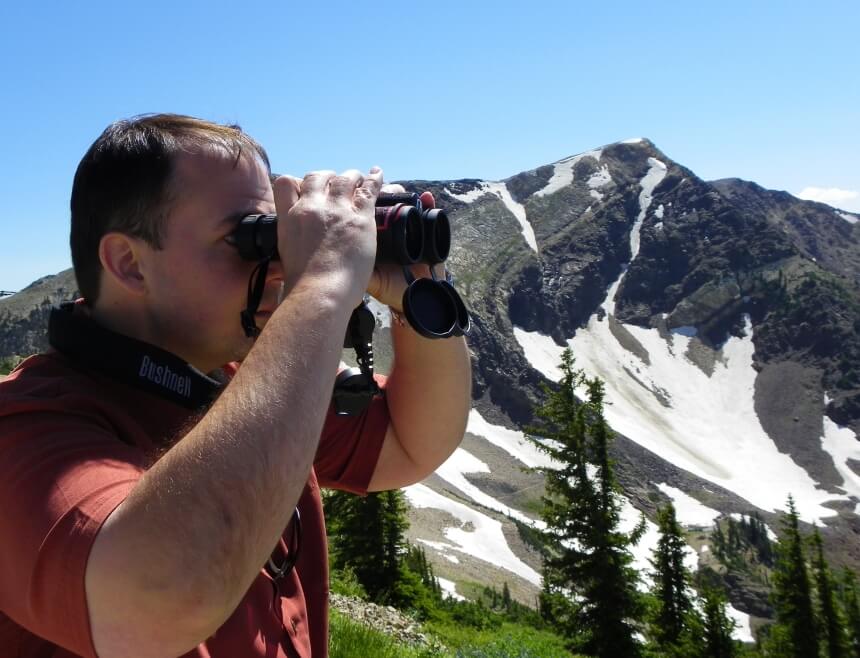 Binoculars generate the desired magnification with the help of a lens system. The rangefinder is operated by batteries or accumulators. This sends out a laser beam and calculates the time required to reach the targeted distance. This is then shown on the display. This is usually located in the eyepiece so that it can be captured in real-time.
Binoculars generate the desired magnification with the help of a lens system. The rangefinder is operated by batteries or accumulators. This sends out a laser beam and calculates the time required to reach the targeted distance. This is then shown on the display. This is usually located in the eyepiece so that it can be captured in real-time.
A bundled light beam is best suited for this because it has a high level of precision. This is why the term binoculars with laser rangefinder are more appropriate.
There are various advantages and areas of application when it comes to using a pair of binoculars with a rangefinder. Some of these include:
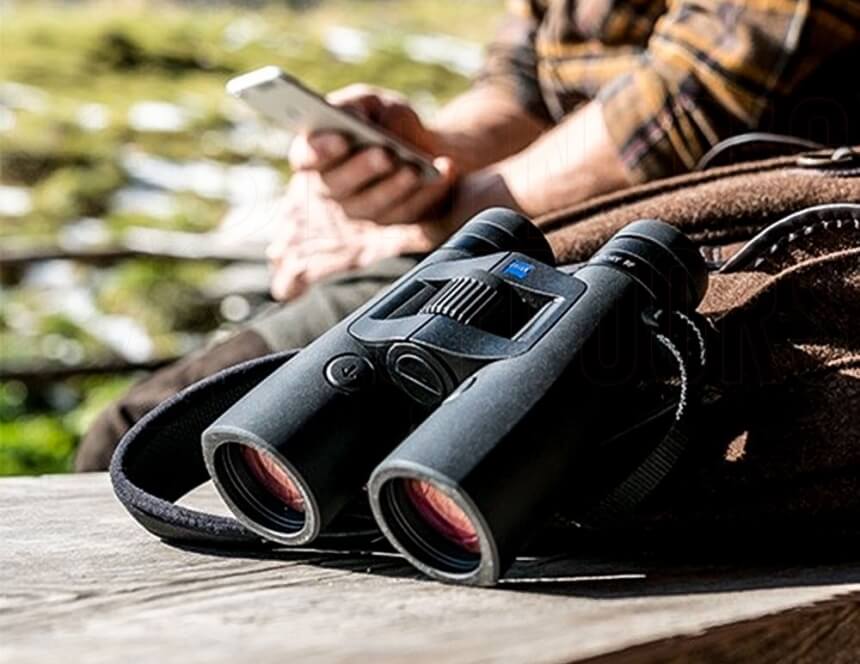 As everything in this world, also rangefinder binoculars have their benefits and downsides, let us have a closer look at them:
As everything in this world, also rangefinder binoculars have their benefits and downsides, let us have a closer look at them:
Pros:
Cons:
Which specifications are important when assessing a long-range vision device with a rangefinder and which features distinguish high-quality models? Consider these criteria when buying rangefinder binoculars.
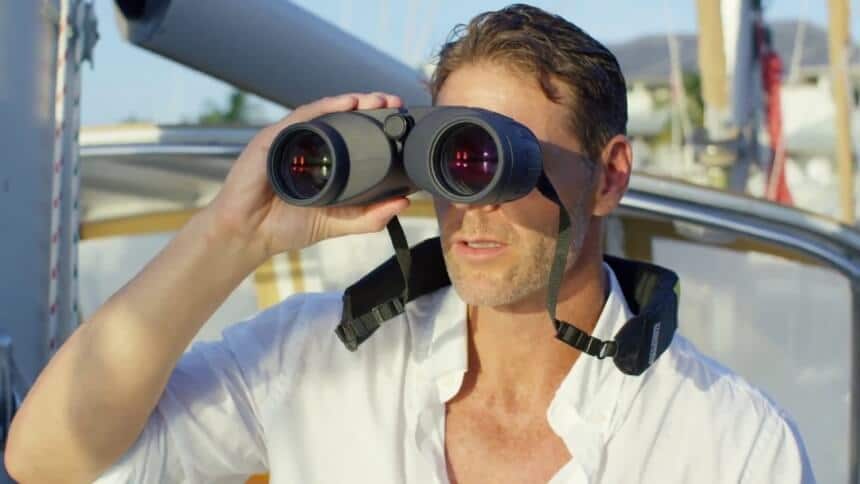 The very first thing you will need to consider when choosing your new binoculars is what use you will want to do with them. There are so many different types of binoculars and each is more suited to one use than another. In this sense, it is essential to know which “combination” is suitable for each use. By combination, we mean two technical specifications that you will always find mentioned together. This includes the number of magnifications, followed by the diameter of the objective lenses. The combination of these two factors depends on other qualities of the binoculars, such as the brightness of the image and the width of the field of view. This is why binoculars with which to observe a large portion of the landscape will have a different combination from one designed to observe smaller portions.
The very first thing you will need to consider when choosing your new binoculars is what use you will want to do with them. There are so many different types of binoculars and each is more suited to one use than another. In this sense, it is essential to know which “combination” is suitable for each use. By combination, we mean two technical specifications that you will always find mentioned together. This includes the number of magnifications, followed by the diameter of the objective lenses. The combination of these two factors depends on other qualities of the binoculars, such as the brightness of the image and the width of the field of view. This is why binoculars with which to observe a large portion of the landscape will have a different combination from one designed to observe smaller portions.
Recognizing the combination of binoculars is very simple, as it is always indicated next to the model name: you will therefore find binoculars with 10 × 50, 8 × 42, and so on. The first of these two digits (10x, 8x, etc.) indicates the number of magnifications, while the second (50, 42, etc.) indicates the diameter in millimeters of the objective lenses. We have said that different combinations are suitable for different uses: we summarize below in a table which are indicatively the combinations suitable for the different uses of the binoculars.
| Magnification | Diameter | |
| Versatile | 10 | 50 |
| Pocket size | 8-10 | 20-25 |
| Bird watching and hunting | 8 | 42 |
| Hiking | 7-8 | 30-42 |
| Astronomy | > 10 | > 50 |
| Nautical | 7 | 50 |
Having made this fundamental premise, let’s go into a more detailed level of analysis. If it is indeed true that the combination of the two elements just mentioned can already tell you a lot about how much and how you will be able to see through binoculars, there are other considerations regarding the quality of the optical system that are very important to determine a good visual rendering. They are the type of prisms mounted on the binoculars, the materials used to make the optical system, and the treatments applied to the optical surfaces.
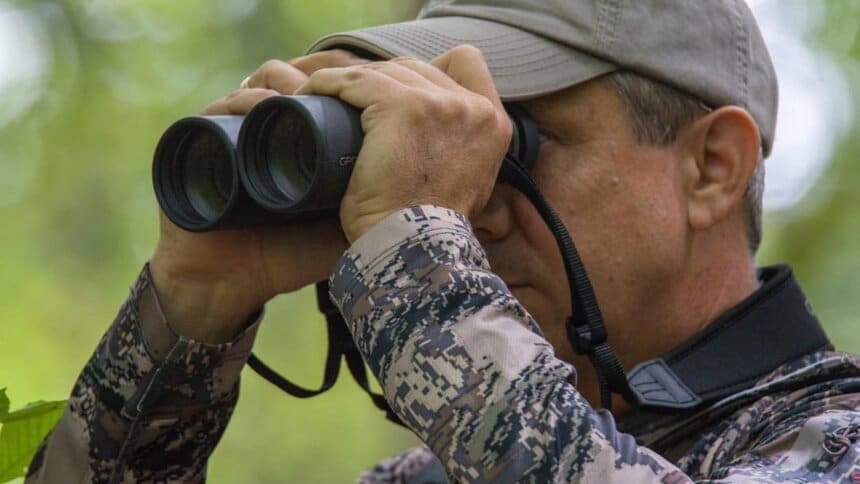 Good binoculars are determined by the number of magnifications made by the instrument: the field of view. This represents the extension of the portion of land that the binoculars allow to observe from a distance. This can be found expressed in meters or degrees in the technical specifications of the product. It is usually expressed in yards. The length of the portion observable from a distance is usually indicated per 1000 yards. For example, 110 yards, 130 yards, 140 yards, etc. In comparison, the STEINER M1050 LRF 10X50 2682 has a field of view of 348 feet from 1000 yards. Meanwhile, the NIKON LASERFORCE 16212 has a field of view of 320 feet from 1000 yards.
Good binoculars are determined by the number of magnifications made by the instrument: the field of view. This represents the extension of the portion of land that the binoculars allow to observe from a distance. This can be found expressed in meters or degrees in the technical specifications of the product. It is usually expressed in yards. The length of the portion observable from a distance is usually indicated per 1000 yards. For example, 110 yards, 130 yards, 140 yards, etc. In comparison, the STEINER M1050 LRF 10X50 2682 has a field of view of 348 feet from 1000 yards. Meanwhile, the NIKON LASERFORCE 16212 has a field of view of 320 feet from 1000 yards.
When expressed in degrees, what is described is the amplitude of the angle of the visual cone embraced by binoculars, e.g. 5th, 6th, 7th, etc. If this last measurement is obscure for you, don’t worry: it is enough to multiply the angle by 17.45 to obtain the observable meters from 1 km away. But be careful: this multiplication is only reliable for angles less than 10°!
So how does the number of magnification affect the extent of the field of view? Very intuitively: the higher the magnification power of the binoculars, and therefore the more magnifications it performs, the more restricted the portion of land that allows you to observe. On the contrary, the smaller the magnifications, the greater the extension. Even in terms of field of view, therefore, what you need to evaluate is what you need the binoculars for. For example, if you want to observe animals with a discreet level of detail, you will need a good number of magnifications, resulting in a loss of field of view. If, on the other hand, you want to be able to follow a moving animal within a rather wide panorama, you may prefer binoculars with less than 10 magnification and consequently with a wider field of view, such as the Newcon Optik 12K, which has 7 times of magnification
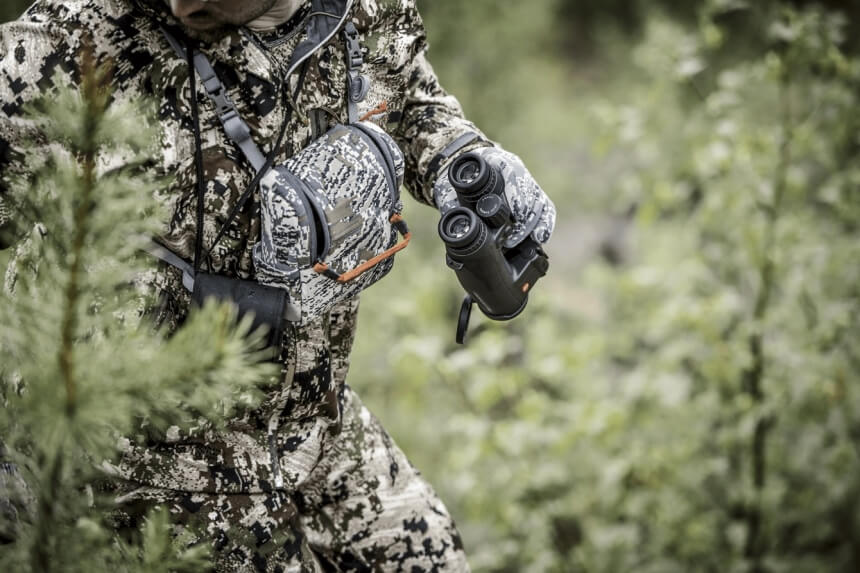 This adjustment is often present even in cheaper models, and it is important to correctly focus the image with both eyes. All have differences in vision from one eye to another, some more accentuated, some less, and it is, therefore, necessary to adjust the focus separately for the two eyepieces from the first use. The diopter adjustment ring is typically located on the right eyepiece, and the procedure for adjusting the focus is very simple: first of all, the focus is based solely on observing an object of your choice from the left eyepiece only with the left eye. Then we move on to the observation of the same object from the right eyepiece with the right eye: focusing it using the diopter adjustment ring will obtain a perfectly balanced focus for both eyes. We, therefore, recommend checking the presence of this adjustment in particular to those who already know that they have significant differences in sight between the two eyes.
This adjustment is often present even in cheaper models, and it is important to correctly focus the image with both eyes. All have differences in vision from one eye to another, some more accentuated, some less, and it is, therefore, necessary to adjust the focus separately for the two eyepieces from the first use. The diopter adjustment ring is typically located on the right eyepiece, and the procedure for adjusting the focus is very simple: first of all, the focus is based solely on observing an object of your choice from the left eyepiece only with the left eye. Then we move on to the observation of the same object from the right eyepiece with the right eye: focusing it using the diopter adjustment ring will obtain a perfectly balanced focus for both eyes. We, therefore, recommend checking the presence of this adjustment in particular to those who already know that they have significant differences in sight between the two eyes.
To talk about prisms we have to make a small technical excursus. The light passing through the objective of the binoculars produces an image that reaches the observer’s eye upside down: for this reason, the optical group of a binocular also includes an image straightening system. Straightening is achieved through glass prisms, inserted in the body of the binoculars, which overturn the image through a series of refractions. The prisms that can be found on binoculars are basically of two types and each has both advantages and disadvantages.
The first type is that of Porro prisms, which are named after the engineer who developed them in the 19th century. Of the two types, this is the one with greater constructive simplicity and less refraction of the image. This means that Porro prisms are the least expensive type and also the one that disperses less light during the transition from one refraction to another. We must keep in mind that a small portion of the reflected light beam is dispersed at each impact on a surface, even if this is transparent like glass.
For this reason, a smaller number of refractions corresponds to a lower dispersion of light, and therefore a greater brightness of the image. The major disadvantage of Porro prisms is their weight: they are two rather bulky adjacent prisms, placed in each optical tube, which inevitably determine a rather high weight of the instrument and also a significant bulk in width. A good example of a pair of binoculars with Porro prisms is the Leica Geovid 10×42 HD-R 2700.
The second type is that of roof prisms. They take their name from their characteristic shape. The realization of this type of prism is technically more complex than Porro prisms. This is because they have a greater number of surfaces, the precision of which must be absolute, otherwise, there will be a significant loss of image sharpness. For this reason, roof prisms are generally more expensive than Porro’s. And they also tend to disperse a greater amount of light, because they perform a greater number of refractions. The main advantage of this type of prism is that not developing as much in width, they are smaller, more compact, and lighter than those of Porro.
You will find one or the other type of prisms associated with certain combinations of magnification number and lens diameter. Usually on the smallest binoculars, up to 8x magnification, roof prisms are mounted, while most likely on binoculars from 10x magnification, you will find Porro prisms. Our overall best binoculars with rangefinders, the Vortex Fury HD 5000, have room prisms.
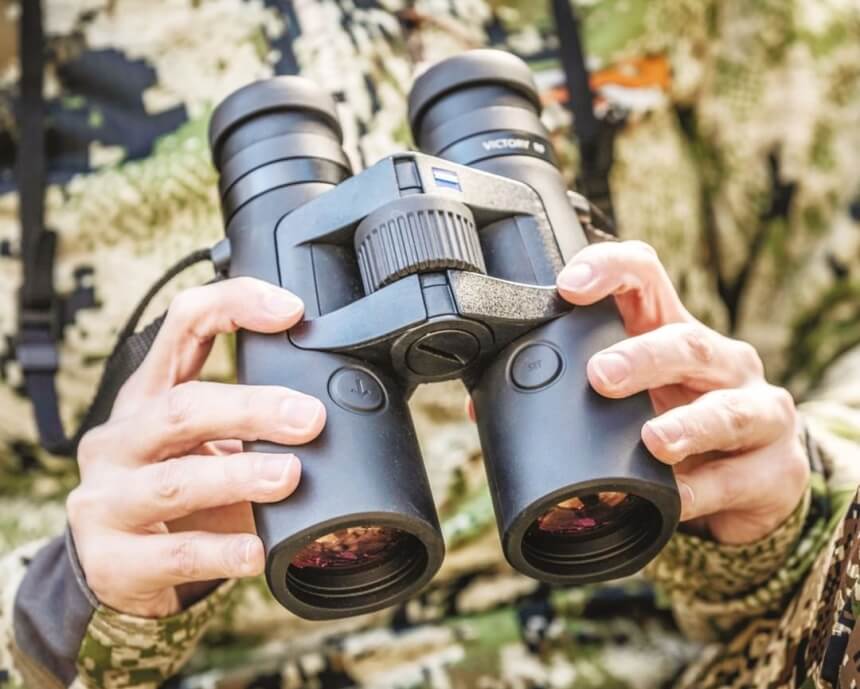 We mentioned the focus talking about dioptric adjustment: let’s talk about it now in detail. The focus naturally serves to visualize the object that you want to observe in the clearest possible way and is obtained through a special wheel. In the vast majority of cases, the focus is central, i.e. the adjustment wheel is placed between the two tubes, easily accessible by the hands holding the binoculars. There are also some cases, much rarer, in which the focus is independent, meaning that each eyepiece has an adjustment ring and the focus is adjusted independently. In this case, the procedure is the same as we have described for the diopter adjustment above. Requiring more time than the central focusing, this type of focusing is not very suitable for naturalistic observation situations, in which it is necessary to quickly focus on the observed subject.
We mentioned the focus talking about dioptric adjustment: let’s talk about it now in detail. The focus naturally serves to visualize the object that you want to observe in the clearest possible way and is obtained through a special wheel. In the vast majority of cases, the focus is central, i.e. the adjustment wheel is placed between the two tubes, easily accessible by the hands holding the binoculars. There are also some cases, much rarer, in which the focus is independent, meaning that each eyepiece has an adjustment ring and the focus is adjusted independently. In this case, the procedure is the same as we have described for the diopter adjustment above. Requiring more time than the central focusing, this type of focusing is not very suitable for naturalistic observation situations, in which it is necessary to quickly focus on the observed subject.
You can find on the market low-cost models with the words “autofocus“: It is necessary to clarify what it is. These are not models equipped with revolutionary automation technology, but with fixed focus optical instruments: the depth of field of these is such as to allow you to view objects in focus from a rather close distance, typically a dozen meters, up to endlessly. The technology used to obtain this result does not reside in the binoculars, but your eye! The binoculars are focused at production on a point at a great distance, and for the focus of the closest objects, the lens that comes into play is that of the crystalline. Automatic focus? Yes! But it’s the same one you use when looking at the world without binoculars!
This type of binocular is immediately ready for use without having to focus and is therefore ideal for observation in the open field, particularly for nautical use, or for observing fast-moving subjects.
The eye relief performs a double function. On the one hand, it allows you to place the binoculars on your face, shielding the eye from sunlight. And on the other hand, it allows you to precisely match the exit pupil with the pupil of the observer. This second function is the most important for a correct vision of the image transmitted by the binoculars, especially in changing lighting conditions.
As the size of your pupil changes, the pupil extraction will also vary. The adjustment is obtained through two soft “cups” placed on the eyepieces, removable and adjustable to the desired length.
There are two types of possible eye relief adjustments:
Unfortunately, many low-end models are completely devoid of ocular relief. They, therefore, force the user to keep the binoculars at the right distance with greater effort and discomfort. For this reason, we recommend not to underestimate this insignificant detail!
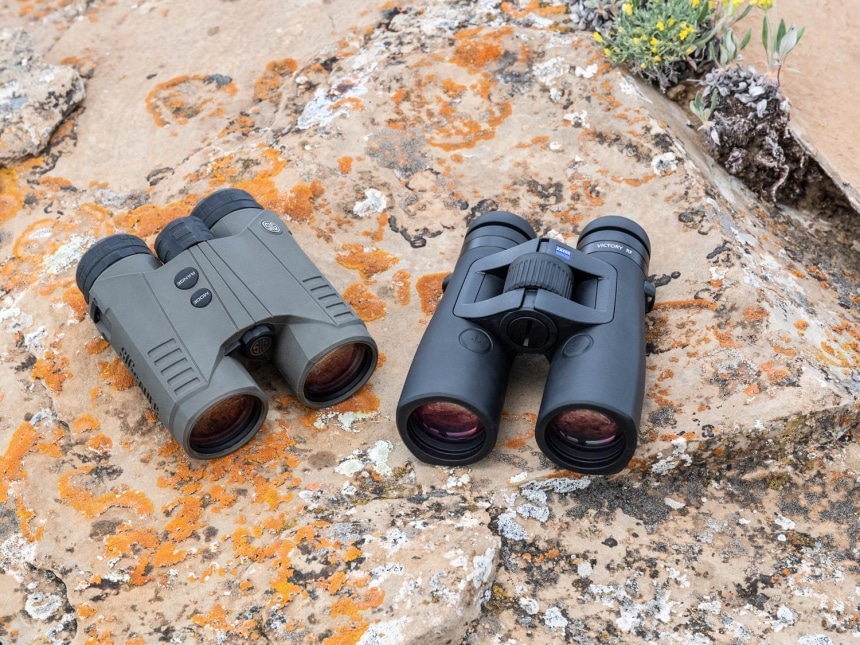 Having made all the necessary considerations concerning the optics and the intended use of the binoculars, it is advisable to focus on other non-secondary structural characteristics. Those looking for binoculars, in fact, in most cases want an instrument to take with them in the open air. This can either be in the woods, in the open countryside or by the sea. It is therefore of fundamental importance that the binoculars you choose can withstand any exposure to the elements, possible falls, and contact with dirt. What determines the durability and design are the following:
Having made all the necessary considerations concerning the optics and the intended use of the binoculars, it is advisable to focus on other non-secondary structural characteristics. Those looking for binoculars, in fact, in most cases want an instrument to take with them in the open air. This can either be in the woods, in the open countryside or by the sea. It is therefore of fundamental importance that the binoculars you choose can withstand any exposure to the elements, possible falls, and contact with dirt. What determines the durability and design are the following:
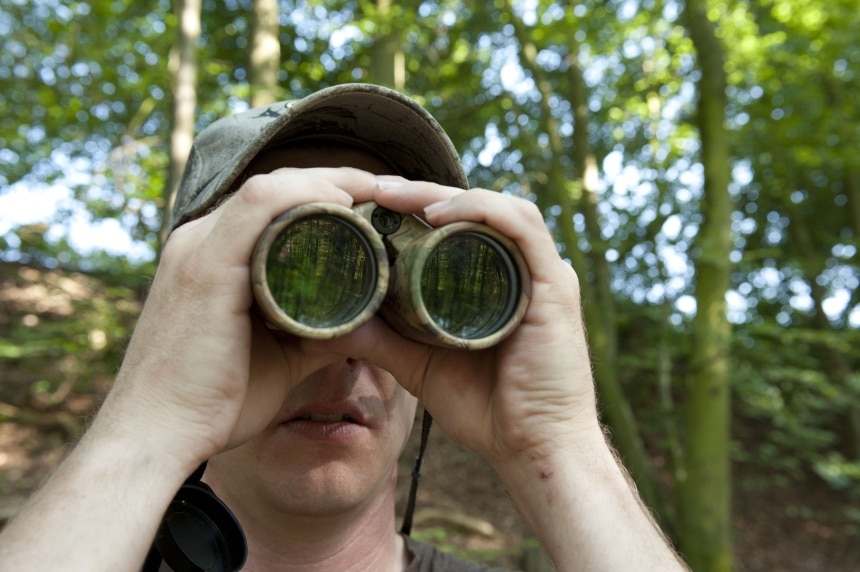 Another element that contributes to the quality of the final image is the material in which the lenses and prisms are made. Naturally, it is glass. But they tend to be of two types: BaK4 glass and BK7 glass.
Another element that contributes to the quality of the final image is the material in which the lenses and prisms are made. Naturally, it is glass. But they tend to be of two types: BaK4 glass and BK7 glass.
BK7: BK7 glass is borosilicate glass used in optics. In addition to being very resistant, it has an excellent degree of transparency, which makes it particularly suitable for light transmission.
The BAK4 glass is Crown-barium glass. It is characterized by a low refractive index and low dispersion of light. Therefore, this kind of glass is used for the realization of the optical system of the best binoculars. As it is easy to guess, there is a certain price difference between optics made of borosilicate glass and Crown-barium optics. The latter, because of the greater value and the best quality, has a higher price than the former.
However, we must emphasize that there is currently no production standard that establishes the necessary parameters to be able to name a glass with the wording “BaK4”. Technically, this acronym was initially adopted by Schott, a German manufacturer of high-quality optical glasses. It is possible to find binoculars on the market with this wording, without corresponding to the refractive and dispersion characteristics of BaK4 glass produced by Schott.
However, even in the absence of precise indications, there is an intuitive method to understand what type of glass the prisms were made with. You only need to observe the shape of the exit pupil. If the pupil is perfectly circular, the glass used is almost certainly of the BaK4 type. Meanwhile, if it has a “vignetting”, with slightly squared corners, the glass used is more likely BK7.
Good examples of binoculars with BaK4 prisms are the Bushnell Fusion 12×50 and the USCAMEL UW004.
The dimensions of a binocular are all the more larger, the wider the objective lens is. You’ll have higher dimensions when it has a high number of magnifications. Portability is generally identified in the 10 × 50 models. Their weight can range from 700g to 1kg. The dimensions are usually around 20 x 20 cm. Larger binoculars, with more magnification and a larger objective, are considered suitable for “sedentary” use, preferably from a fixed position. These include astronomical binoculars, such as the 20 × 80 up to 25 × 100 models.
On the other hand, binoculars with a smaller objective, accompanied by a lower number of magnifications, are better suited for “outdoor” use. The dimensions are more compact also thanks to the use of roof prisms, and the weight is consequently lower. The weight of a compact binocular can drop to 200g and the length to about 15 cm.
If all you want is a pair of compact and pocket-size rangefinder binocular, we recommend any of the SIG SAUER KILO 3000 BDX or the Nikon LaserForce 16212. They weigh 31 ounces and 30 ounces respectively.
The brightness of the binoculars is expressed in the technical data under the heading “brightness index” or “exit pupil”. The value is expressed in millimeters and indicates the diameter of the light beam exiting the eyepiece. You can observe the exit pupil by pointing the binoculars towards a light source and observing it from the side of the eyepieces at a distance of about 30 cm. On each eyepiece, you can see a bright circle generated by the outgoing light.
The diameter of the exit pupil is given by the ratio between the diameter of the objective lenses and the number of magnifications. For example, the 10 × 50 binoculars, that is with 10 magnifications and objective lenses of 5 cm in diameter, will have an exit pupil of 5 mm, an 8 × 20 will have a brightness index of 2.5, and so on.
We advise you to always check that the exit pupil is consistent with the stated magnification and diameter specifications of the objective. If a 10 × 50 binocular has an exit pupil of less than 5 mm in diameter, it means that the diameter of the lenses is not actual 5 cm as stated, but less.
Discrepancies between combination and exit pupil can happen, especially when we consider binoculars in the low price range whose construction precision is certainly not at the highest levels.
Warranty coverages range between 2-5 years and lifetime. However, the most recommended, of course, are models with a lifetime warranty. Rangefinder binoculars with a lifetime warranty are usually built to last when maintained properly and you can even hand them over to generations. Good models with lifetime warranty include the Vortex Fury HD 5000, Athlon Optics Cronus 10×50, and the Barska 7×50 WP Battalion Binoculars.
Rangefinder binoculars are ideal for those who want to know the distance separating them from their targets. They save you the weight of two devices. If you’re yet to decide the model to choose, then check our final verdict.
The ATN BinoxX 4K binoculars have an impressive feature set including 1080P HD video recording directly to your SD card and the possibility to interface with other ATN smart products. This makes them a great option for many outdoor activities, and you’re sure to appreciate the long battery life and comfortable viewing experience.
The Astra Optix HBX1600B is a flexible, premium grade rangefinder binocular with ultra fast ranging and superb image quality regardless of the lighting conditions.
Choose our Budget Pick, the USCAMEL UW004, if you want a low-cost model. The binoculars are suitable for observing the ocean and the earth. The objective lens of this device is 50mm. It has maximum brightness even in low light conditions.
